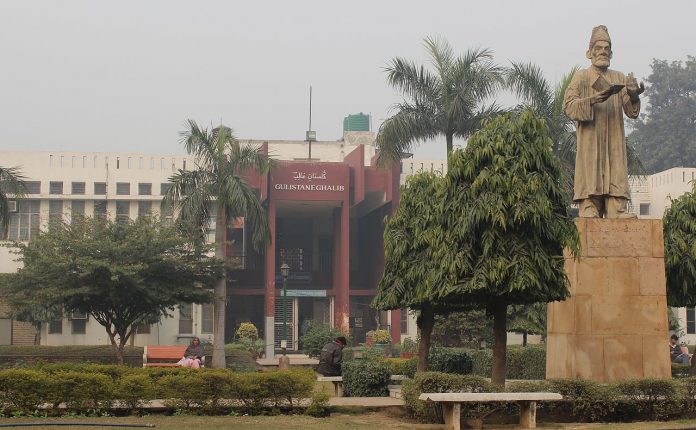TCN News
New Delhi: A Jamia professor Dr. Mohammad Irfan Qureshi, has decoded vital information regarding virulence factor of deadly viruses including novel coronavirus.
The professor has conducted this study with with Dr Mohammad Asim of University of Surrey, UK.
Dr Qureshi from Department of Biotechnology in Jamia co-authored the research with Dr Asim in Department of Clinical and Experimental Medicine at the UK varsity to study new mutations of the Coronavirus COVID19 that has so far infected more than 5.3 million people and caused 340 thousand deaths worldwide. The research has added to the huge body of scientific developments ongoing in the field, and holds significance as the details of the study has disclosed a potential number of other diseases that contain similar infection procedures.
“New mutations in the novel coronavirus-2 spike are detrimental to initiate virus-host interaction,” said Dr Qureshi. He explained that on bioinformatic analysis of the virus, it was newly found that it is capable of creating multiple new mutations with its strong surface spreading capability and that surface-to-surface compatibility of virus and human is highly decisive for deciding if an infection will take place. Stressing on the need for maintaining physical distance from objects, he added that the comparative evaluation of spike glycoproteins with other deadly viruses, it was noticed that similar “surface residues are a hallmark for a higher degree of contagiousness in many viruses.”
He informed that shocking occurrence of similar surface proteins as with other deadly diseases have been found during the study, adding that these virus strains which have SPRR residues in their surface proteins are “highly contagious.” These identical tetra peptide SPRR stretch “has been adopted by many viruses with the passage of time, perhaps due to natural mutations,” and that is why studying its mutational capacity is crucial, he said concerning the objective of this study. Other than hepatitis C, HIV-1 subtype c, denguvirus 1, chikungunyavirus, Zaire ebolavirus, zikavirus and dependovirus, the research has revealed that Porcine epidemic diarrhea virus (PEDV), Avian infectious bronchitis virus, Rousettus bat coronavirus HKU9/KY06/HKU12-600 also harbor SPRR residues in their glycoprotein spike.
Based on its presence in so many diseases, Dr Qureshi and Dr Asim have provided RNA-interference based inhibition of important human genes and are also analyzing new virulent processes that can subsequently lead to infection.
“It is shocking to learn about a possibility of COVID-19-like disease outbreak that could have taken place way back around 2006,” suspect the authors. They detailed that the first instance of the emergence of SPRR in any betacoronavirus SARS-CoV occurred in a sample collected from Kenya fruit bat coronavirus (KY06/2006) and not Wuhan, China; at least at that time. It demonstrated possible mechanisms of higher pathogenicity caused by SARS-CoV-2 virus in a human cell. This is the “biggest threat in the cell as it limits furin in cellular defence and metabolism, thus remaining un-cleaved and non-activated and weakening host immunity,” highlighted Dr Qureshi.
“We are sure that this finding is going to significantly contribute in controlling and treatment of COVID-19 disease through targeting of SPRR residues,” said Dr Qureshi, outlining that this novel study has predicted top 50 possible hosts that could be susceptible to infection by novel coronavirus-2. The reports have been generated through computational biology in this study and its preprint is available with Elsevier Publishers on the portal of the Biology Research Network (SSRN) with ID 3605888.
Speaking about the significant contributions made to the ongoing research projects in the scope of Coronavirus, Dr Qureshi said that, “We dedicate this research to all the people who in one or other way suffered due to present COVID-19 crisis and offer it as a gift of Eid to India as well as the world.”
Jamia Millia Islamia’s Vice-Chancellor Professor Najma Akhtar congratulated Dr Qureshi for this important research and said she extends “support in getting more insights into the disease through this world-class research.”


